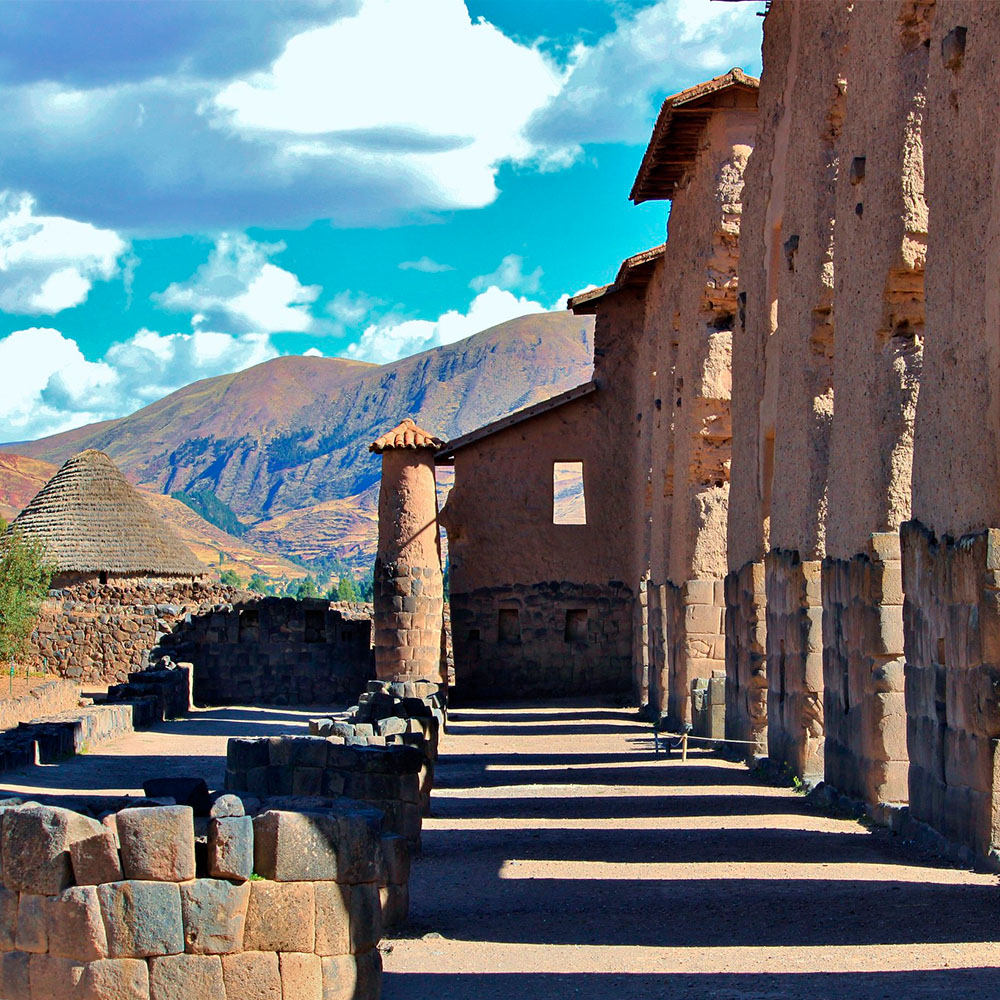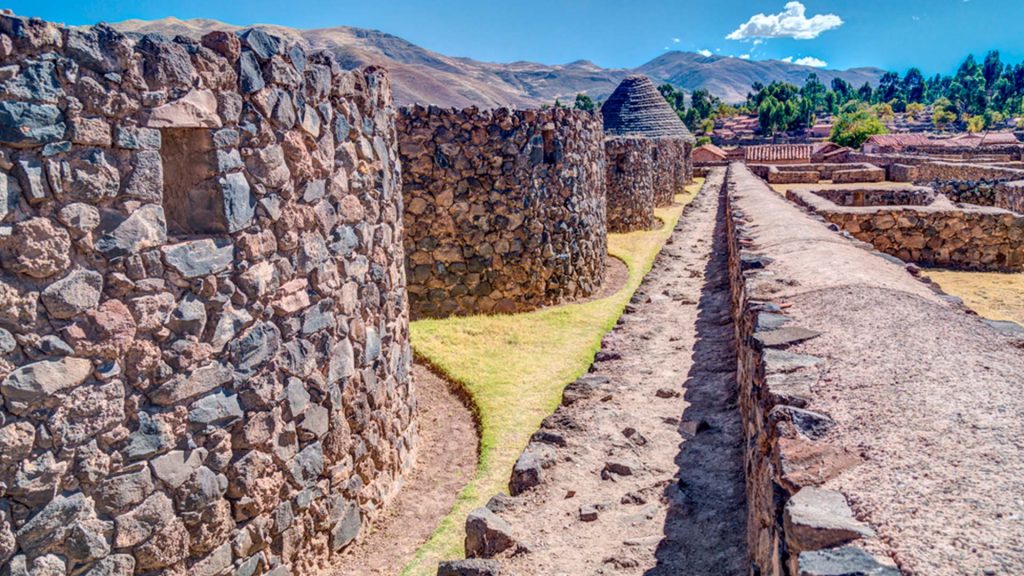

The Raqchi archaeological park is one of the largest attractions and is known for its remarkable Temple of Wiracocha. During your visit, you can explore various structures such as the impressive Inca temple, qolqas, the Inca bath, among others.
You will learn about the fascinating history of Raqchi, an important ceremonial center of the Inca era. Additionally, you can enjoy various cultural activities and taste delicious local cuisine, making your visit an unforgettable experience.
Table of Contents
The complex was built in different stages. Part of it was constructed during the reign of Inca Wiracocha, as mentioned by the chronicler Inca Garcilaso de la Vega. Later, between 1439 and 1471, Pachacútec expanded the construction, and finally, Inca Túpac Yupanqui completed the building between 1471 and 1493, according to Cieza de León.
According to the latest research, the mentioned archaeological park covers an approximate area of one thousand hectares. Outside the giant Inca wall that protects the park, there are also constructions such as aqueducts, underground tombs, and pre-Inca enclosures.
It is located in the district of San Pedro, in the Province of Canchis, 119 km from the city of Cusco.
It is one of the most notable architectures in the park. You will observe its large adobe walls with a stone base, reaching 12 meters in height. This temple was dedicated to the God Wiracocha, one of the most important deities of the Inca culture.
Another sector that stands out for the quality of its architecture is the enclosures or quarters. It comprises a total of twenty-two houses dedicated to the inhabitants.
These constructions are next to the enclosures and have a circular shape. They were used to store food such as corn, potatoes, quinoa, among other products.


The design of these fountains shows the Incas' skill in building stone water channels and reflects the importance of water in their culture. The most finely finished and important fountain is called the Inca Bath.
Do not miss the opportunity to visit the Raqchi viewpoint, from where you can enjoy a great panorama and take photos with the view of the archaeological park.
If you visit the archaeological park in June, do not miss the opportunity to attend one of the most prominent events, the folkloric festival, which takes place every third Sunday in June. Raqchi is filled with music, traditional dances, and delicious gastronomy, providing a great opportunity to enjoy this wonderful experience.
Do not forget to try the delicious local cuisine during your visit. Raqchi offers a variety of traditional dishes such as baked guinea pig, olluco with meat, quinoa soup, among other dishes that you will enjoy during your visit.
Monday to Sunday: From 7 a.m. to 6 p.m.
The entrance to the Raqchi archaeological site can be purchased on-site for a price of 15 soles.
The climate in Raqchi is temperate-cold. You can visit throughout the year, but the best season to visit is from May to October, during the dry season.

Happy passengers